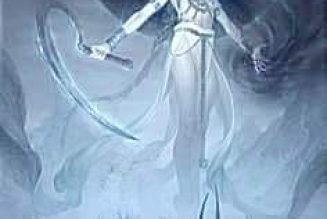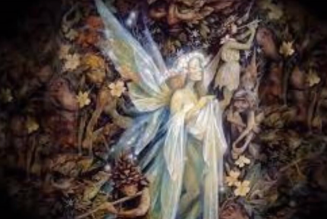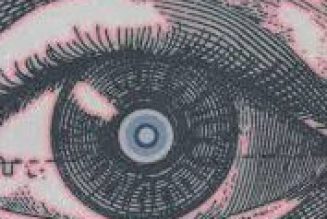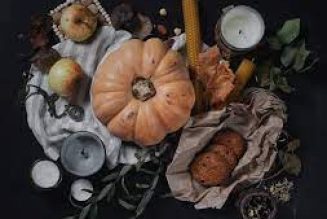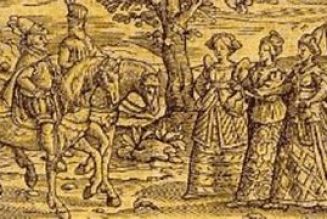
Today fairies are not just for little girls’ imagination, they’re for witches and magical practitioners too. But it’s not truly anything new. It dates back to at least ancient times. There are many historical and folkloric connections between fairies and witches particularly in European traditions. Let’s learn about this connection, as well as where and how the first witch made friends with the fae.
First, Let’s Define the Fae (As Best We Can)
For the intent of this post, I’ll be referring to the fae from an European traditional perspective. Keep in mind there are spirits similar or comparable to the fae all over the world in nearly every ancient, magical tradition. Just as there are mermaids in many cultures worldwide. For this post, I’m sticking to the fae of my personal ancestors’, as this is where my knowledge lies at this time.
So what are the fae, exactly? Can we even define them if we tried? The fae, also called faeries or fairies, have many names and many faces. We’ll see a large variation in temperament, appearance, folklore, traditions, etc. as we travel from country to country and region to region across the European continent. But if I had to define the fae, I’d say they are spirits or otherworldly beings that permeate Celtic lore. Sometimes they seem to be attached to natural landmarks, other times they are attached to homes, families or even individuals. They’ve even been known to attach to especially magical individuals….like witches.
Morgan Le Fay:
The “First” Fairy Witch
Ever heard of King Arthur and the Knights of the Round Table? Within the legends of Camelot are stories of a powerful and feared “fairy witch”. Her name is Morgan Le Fay, and in some versions of the Arthurian legend, she is King Arthur’s sister. The last two words of her name Le Fay literally means the fairy. Morgan Le Fay lived in Avalon and had many psychic and supernatural abilities, and so was accused of being a fairy and a witch by those who didn’t live on the Isle. And likely because of Christian influence in the Arthurian mythos.
Morgan Le Fay and the Isle of Avalon
Different versions of the Arthurian legend paint her in different lights. Morgan Le Fay is a paradoxical character, as are most powerful females in the old myths. Depending on the version of the story, she was either Arthur’s downfall or his healer and savior. The Morgan-friendly legends depict her taking Arthur to the Isle of Avalon, to be his last resting place. Moreover, the Isle of Avalon was a magical place beyond the mist and inhabited by fairies. Nine magical sisters lived there, Morgan Le Fay being one of the nine. Sometimes the Lady of the Lake is one of the nine sisters and in other stories Morgan is actually the Lady of the Lake herself.
The first fairy witch might have been Morgan Le Fay.
The fae have been known to “fraternize” with humans, particularly magical ones, for hundreds of years.
The Fairy Witch Trials
We have all heard of the unspeakable horrors that took place with the Witch Trials in Europe and America. Superstition, power-hunger, and patriarchal greed drove these massacres to abundance. But what most people don’t know is fairies played a part in the Witch Trials too.
The Fairy Witch Trial of the Fisherwife of Palermo
Most of the Fairy Witch Trials took place in Italy. Out of the known sixty-five cases, the Fisherwife of Palermo’s fairy witch trial in Sicily was most well-known. The wife of a fisherman claimed she could leave her body behind and party with the elves whenever she wanted. She explained the King and Queen of Elves promised her riches and other pleasures if she denounced all other gods. She signed a contract and, on many occasions, spiritually joined the elves in feasting and revelry. The fairy faith was strong, and most believed the Fisherwife to be associating with fairies and not the Devil. So inevitably, they released her. Her accusers agreed she was merely “having dreams” of fairies and not physically copulating with “devils”.
Isobel Gowdie & the Queen of Elfame
In a witch trial in Scotland, an accused witch claimed she’d met with the Queen of Fairies (the Queen of Elfame) under the hills. Isobel Gowdie said the fairies taught her and other women how to fly on beanstalks to meet with other witches. Isobel’s confession is the most detailed account from this time period. And can be researched in its entirety online. I also recommend reading Emma Wilby’s book “The Visions of Isobel Gowdie.”
Besse Dunlop, Fairy Witch of Lynn
Besse or Bessie Dunlop of Lynn was a woman accused of witchcraft in North Ayrshire, Scotland in the sixteenth century. The trial documents claim Besse Dunlop confessed to having a familiar spirit named Tom Reid, the ghost of a soldier who aided her prophecies and gave her healing remedies with which to make a living. She also confessed to visiting Elfame (elf-land) through an ancient cave. The Queen of Elfame supposedly sent Besse her familiar Thomas to help her as she was in a dire situation at the time.
The Nature of the Fairies
Fairies were such an integral part of folklore in Europe that most people didn’t associate fairies with the Christian devil for many years. Often, as in the case of the Fisherwife of Palermo, the Church allowed the accused to go free. The Church explained these women’s experiences with fairies as simply dreams or mental illness. However, if fairies were mentioned in alignment with the Devil or familiars, or if the accused was thought to have harmed another using witchcraft, they were tried/tortured/executed.
The Celtic and Germanic People and Household Fae
As an elderly woman in Ireland you couldn’t keep your house too clean. Otherwise people would be suspicious of a bean-tighe in your home. A bean-tighe (pronounced ban-tee) was a female fairy similar to the Scottish brownie who tended house and watched over the children. They accused old women of witchcraft, particularly with fairies involved. The kobold is a Germanic household fairy or dwarf that’s known to take up residence in a home and aid in the household chores. These household types seem to be more prevalent among magical or royal people.
Fairy witches are witches who work with fairies in their craft.
Cunningfolk and Fairy Friends
In opposition to witches who practiced maleficium, there were others who practiced “white” magic. The local cunningman or cunningwoman healed, counteracted curses, helped find lost objects and performed other helpful magical tasks. Many of the cunningfolk received their otherworldly knowledge from the fairies.
Biddy Early
An Irish woman by the name of Biddy Early was a cunningwoman and “fairy doctor” who lived in the late 1700’s through the 1800’s. Biddy was called upon to not only heal people but to find lost items, to cure sick animals, and to aid in crop abundance. Biddy was well known for her herbal knowledge and for clairvoyance. Some said Biddy Early was given powers by the fairies, and that she carried a “fairy bottle” that told whispered the fairies’ secrets to her.
Modern Fairy Witches
The cunningfolk and witches of the past are gone but not forgotten. They live on in a new wave of witches and magical practitioners reviving the old ways. Some fairy witches practice fairy witchcraft by basing their magic and beliefs on fairy lore. Others follow a more religious form of fairy witchcraft.
The Feri Tradition
The Feri Tradition was created by Victor Anderson. This form of witchcraft is based on sensuality and can be very intense in nature. From my research it’s not focused on the actual belief or working with fairies, but more on an ecstatic experience within oneself. There are also various fairy Wiccan traditions that tie Celtic fairy beliefs into ritual and practice.
The Connection Between Fairies and Witches: Natural and Ancestral Theories
I have a few theories as to why fairies and intricately linked to witches. I don’t think there’s any one answer, but it’s more of a web of answers. One of the reasons there’s a connection between fairies and witches is simple – nature. An undying, passionate love for nature and the preservation of it. Witches walk the path of the craft because most seek to commune with the energies all around us, radiating off of our Mother Earth.
Witches Love Nature, As Do the Fae
At least some of the fae are likely spirits of nature, so naturally when witches work with nature, they may find they are also working with elementals and the fae. When nature spirits, fairies, realize a witch is a witch who cares and is in sync with Mother Earth, they will begin teaching that witch their secrets. Is it no wonder witches were closely linked with fairies during the Witch Trials? It makes sense to me.
Fairies and Elves…They May Be Our Ancient Ancestors
Another theory is that the fae may actually be ancestral in origin. Shocking? It may be at first, but the more you study Celtic lore and history, as well as Norse Germanic tradition, you’ll see a pattern emerging. Many of our ancient ancestors claimed descent from faeries and elven races. In Ireland and Scotland, certain clans claim descent the Tuatha de Danann. Some say Cliodhna, Flidais, and Lugh are their ancestors (to name a few). And in Scandinavian countries, we have stories of our ancestors sacrificing to the álfar (elven beings), often on top of ancestral burial mounds. And being that many witches today seek to honor their ancestors, they are also naturally honoring the potential fae in their bloodline.
So when our ancestors in the Medieval Age and early modern era were accused of being witches and consorting with faeries, they were also often accused of being heathens or keeping the “old pagan ways” alive. Perhaps these faeries, our ancestors’ ancestors, came to those witches and pagans because they still believed. Unlike their converted counterparts.
Those Gifted With the “Sight”
In addition, in faery folklore, it was frequently said the fae would give their secrets and essentially “work” with people who had the “sight”. For example, Biddy Early. Or people who had psychic and medium abilities. And, of course, it also happened these individuals with abilities would end up being accused of witchcraft and sadly end up in a courtroom, on a pyre, or hanging from a tree. And if these individuals who had the ability to talk to the fae were fighting to keep the old ways alive including to honor nature and sacred fairy sites and traditions, it makes sense the fae would be more willing to communicate with them than those who weren’t



